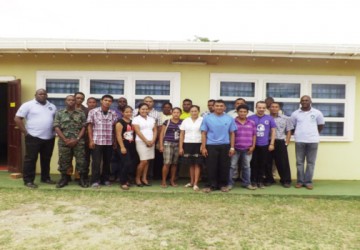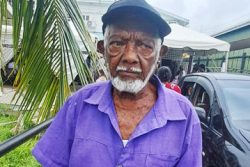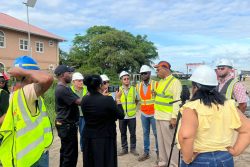The Caribbean Disaster and Emergency Manage-ment Agency (CDEMA) has lauded the Civil Defence Commission (CDC) on the execution of its annual Disaster Pre-paredness and Response exercise – Exercise Floodgate 2013 and for steps taken to boost disaster preparedness in Region Nine.
International evaluator, Brigadier General (rtd) Earl Arthurs of the CDEMA Coordinating Unit said he was satisfied with the planning and execution of Floodgate 2013. Arthurs commended Director General Colonel (rtd) Chabilall Ramsarup and the CDC staff for their commitment to boosting the nation’s disaster risk management capacity and resilience while highlighting the importance of regional and neighbourhood democratic councils in the DRM process.

According to a report from the Government Information Agency (GINA) Exercise Flood-gate 2013 was designed to test the state of readiness and capacities of the National Emergency Operations Centre (NEOC) in Georgetown and the regional emergency operations centres in regions Two, Three, Four, Five and Six during emergencies/ disasters. Various hazard impact scenarios were issued to the participating regions and they were required to take appropriate action in response to the messages received.
The exercise also allowed the CDC, participating regions and stakeholders – members of the Disaster Risk Reduction Platform – to test their message handling and communication capacities while at the same time allowing for the testing of relevant policies, procedures and protocols. Floodgate 2013 saw all of the coastal regions tested at once, and it was also the first time temporary emergency shelters were established during any such annual exercise in all of the coastal regions.
Region Nine
Meanwhile, the CDC, with support from the United Nations continues to augment disaster management in Region Nine (Upper Takutu/Upper Essequibo). The CDC Volunteer Corps (CDC VC), with funding from the United Nations Develop-ment Programme (UNDP) extended its membership to the region. From November 3-14, representatives from the CDC and UNDP were engaged in data gathering and geographic information system (GIS) activities within the region aimed at implementing the Cuban Model Risk Reduction Manage-ment Centre (RRMC) in Lethem, under the UNDP/Caribbean Risk Management Initiative.
“This RRMC project is a pilot project aimed at providing the CDC and the regional administrators with the appropriate technologies and techniques to better monitor hazard impact in the region,” GINA said. In a bid to guarantee the RRMC success, early warning points were set up to monitor flood activities at Massara Village (North Rupununi); Mickey’s Landing (South Pakaraimas); Sand Creek (South Central Rupununi) and at St Ignatius, Lethem and Tabatinga (Central Rupununi).
During this period, also, a stakeholder workshop was held for the senior personnel from the RDC, the army and police force in the region to update them on the process and purpose of the project. Apart from this, a two-and-a-half day Risk Reduction Manage-ment Centre Spatial Database and GIS System workshop was conducted for representatives from the communities selected as early warning points, that is Massara, Mickey’s Landing, Sand Creek and Lethem.
On November 13 the CDC VC officially launched its Region Nine arm with registered members including persons from the North, South and Central Rupununi who were issued with CDC VC pins and branded t-shirts and hats.
The region also elected a three-member management committee comprising Richard Rennie, coordinator; Alister Charlie, deputy commissioner and Kateri Joseph, secretary. The CDC VC boasts more than 200 registered members and aims to become established in all 10 administrative regions. To date, the group has established itself in regions Four, Six and Nine with plans in train to be inducted in the remaining regions within the next 24 months.
In addition, the CDC, with funding from the Caricom/Brazil/FAO Cooperation on Disaster Risk Reduction Initiative implemented by the CDEMA, renovated the restroom at Culvert City Nursery School, installing additional toilets, bathrooms and sinks to increase the carrying and coping capacities of the school, after it was identified as one of the emergency shelters in the region. Similar work was done at the Arapaima Primary School in Lethem via a previous grant under the same initiative, GINA said.
The CDC director general commissioned the facility in the presence of the Region Nine vice chairman last Thursday.





